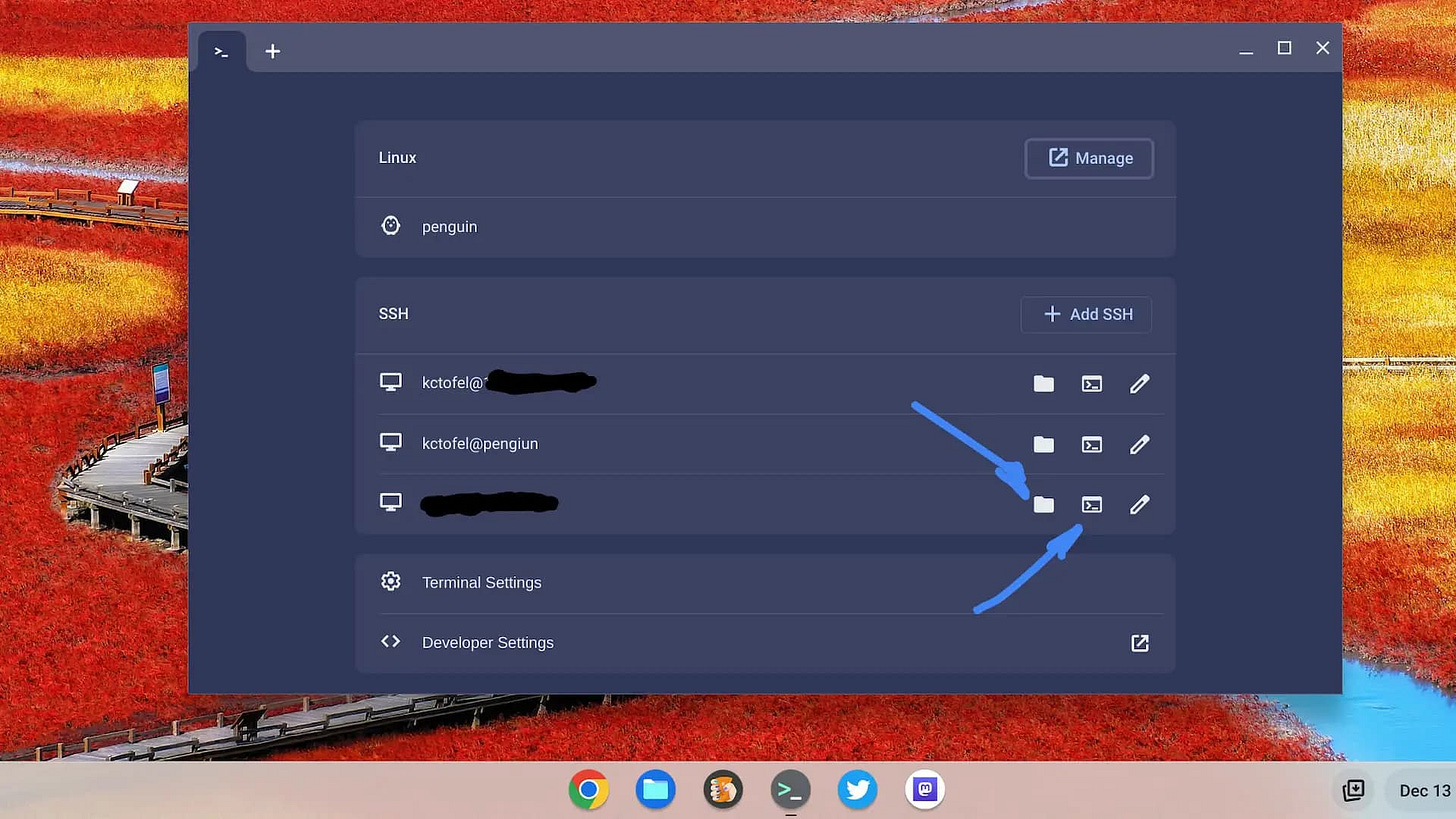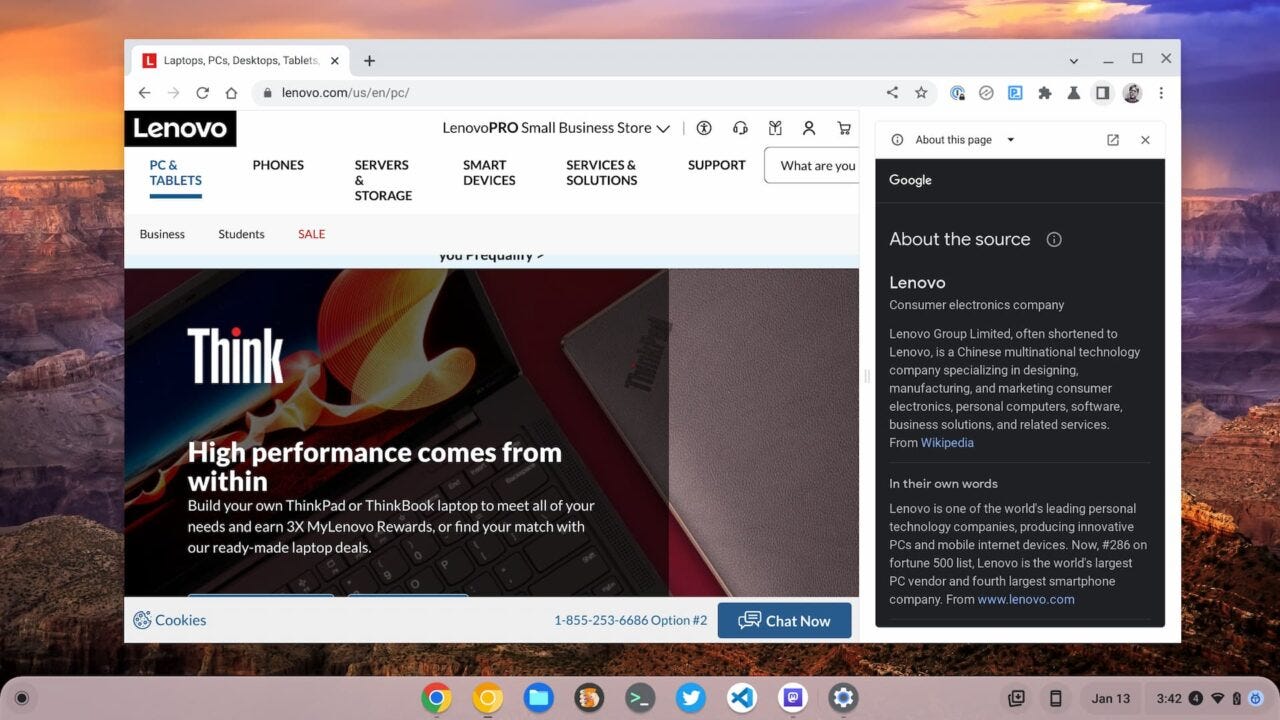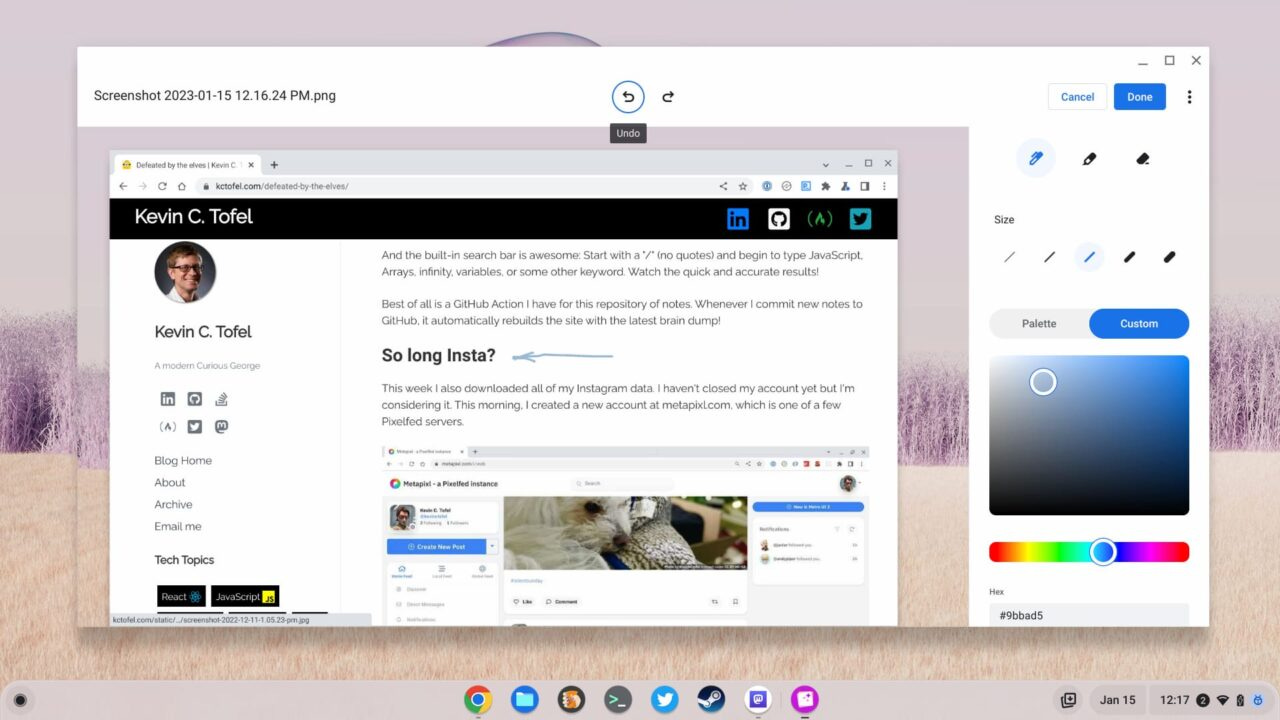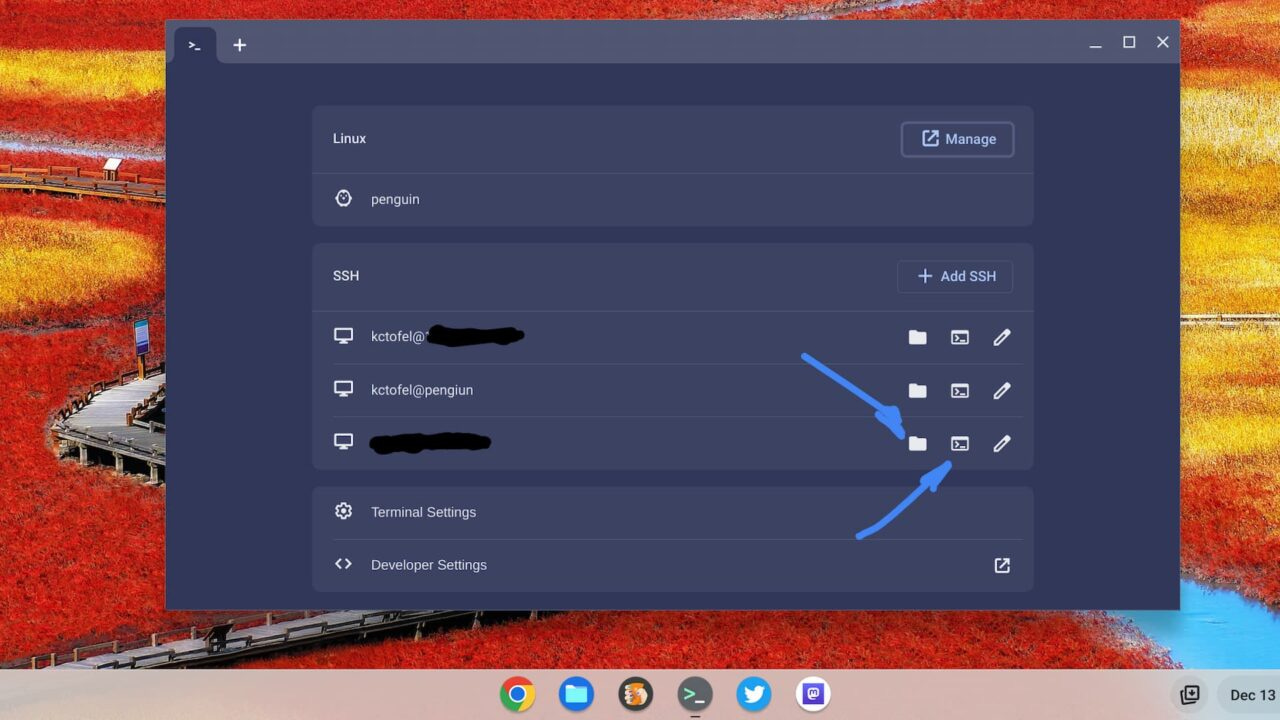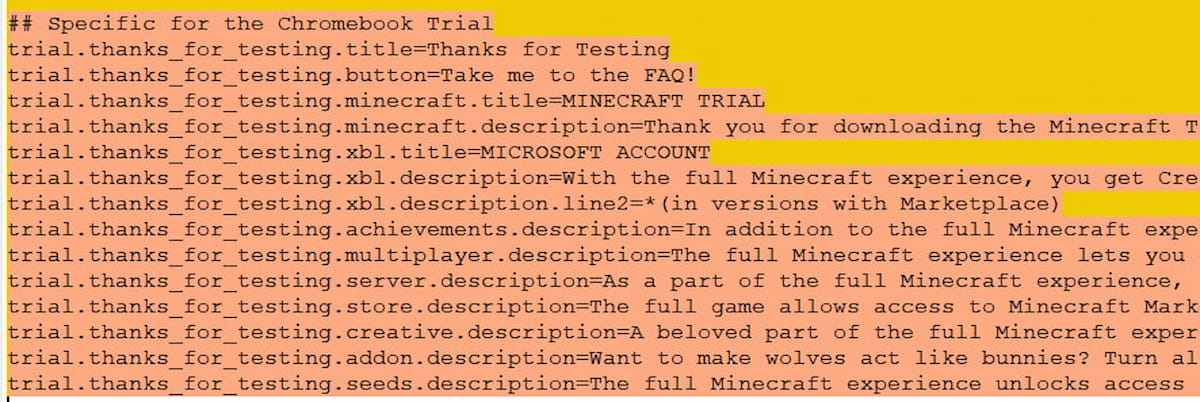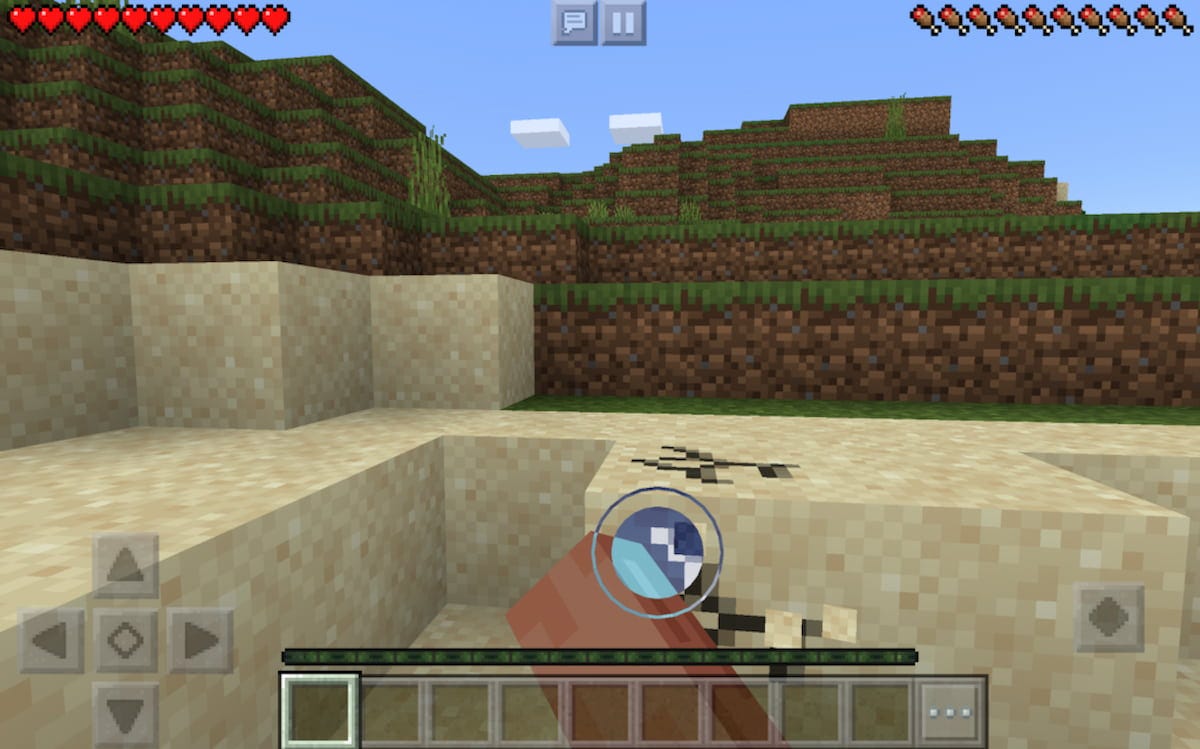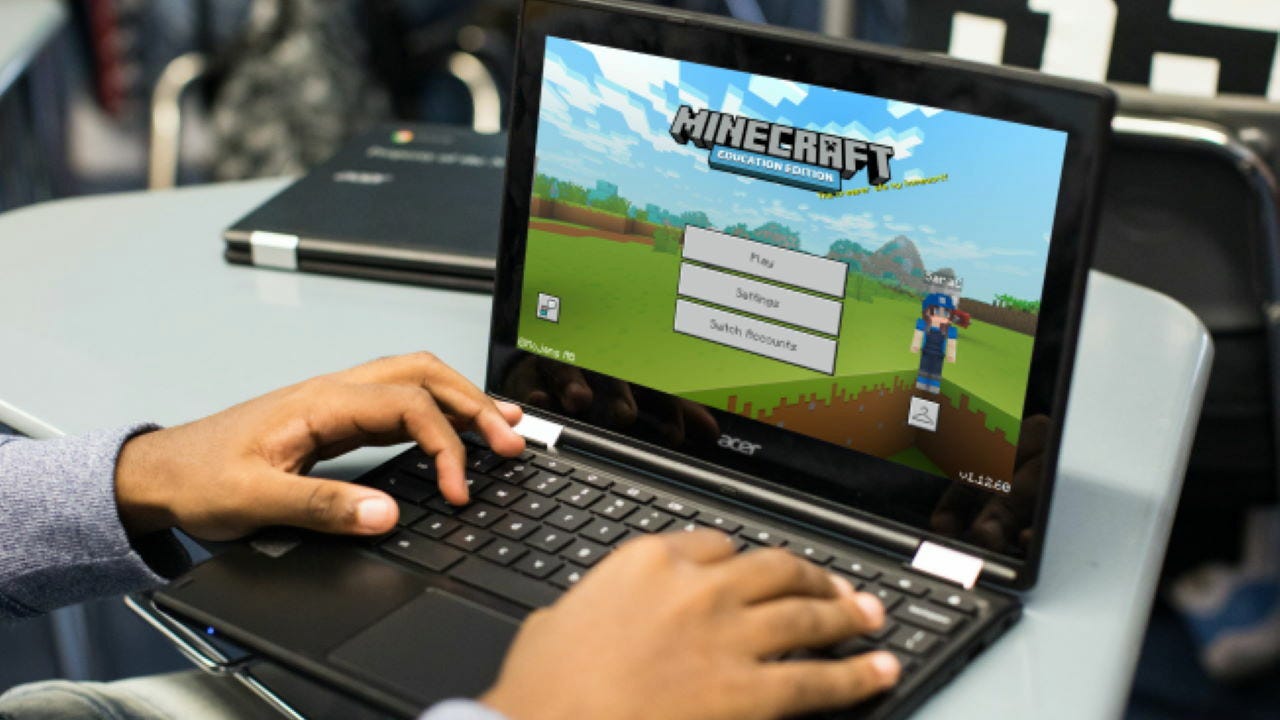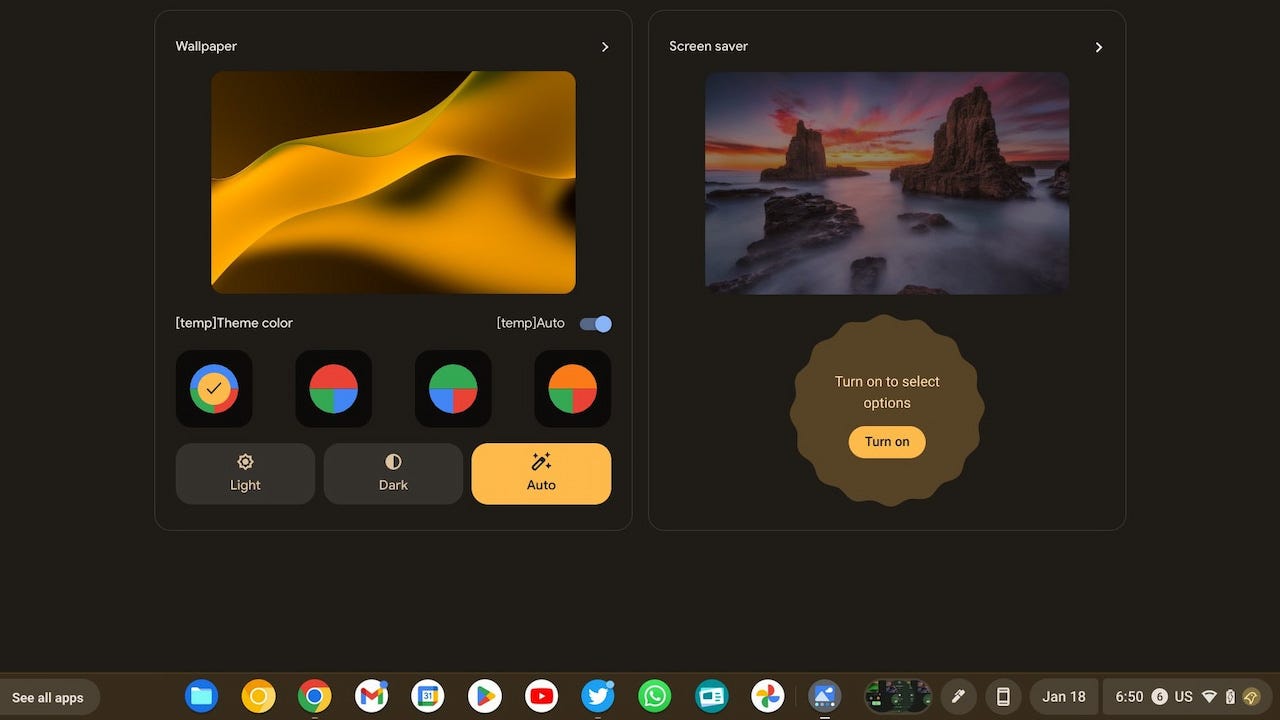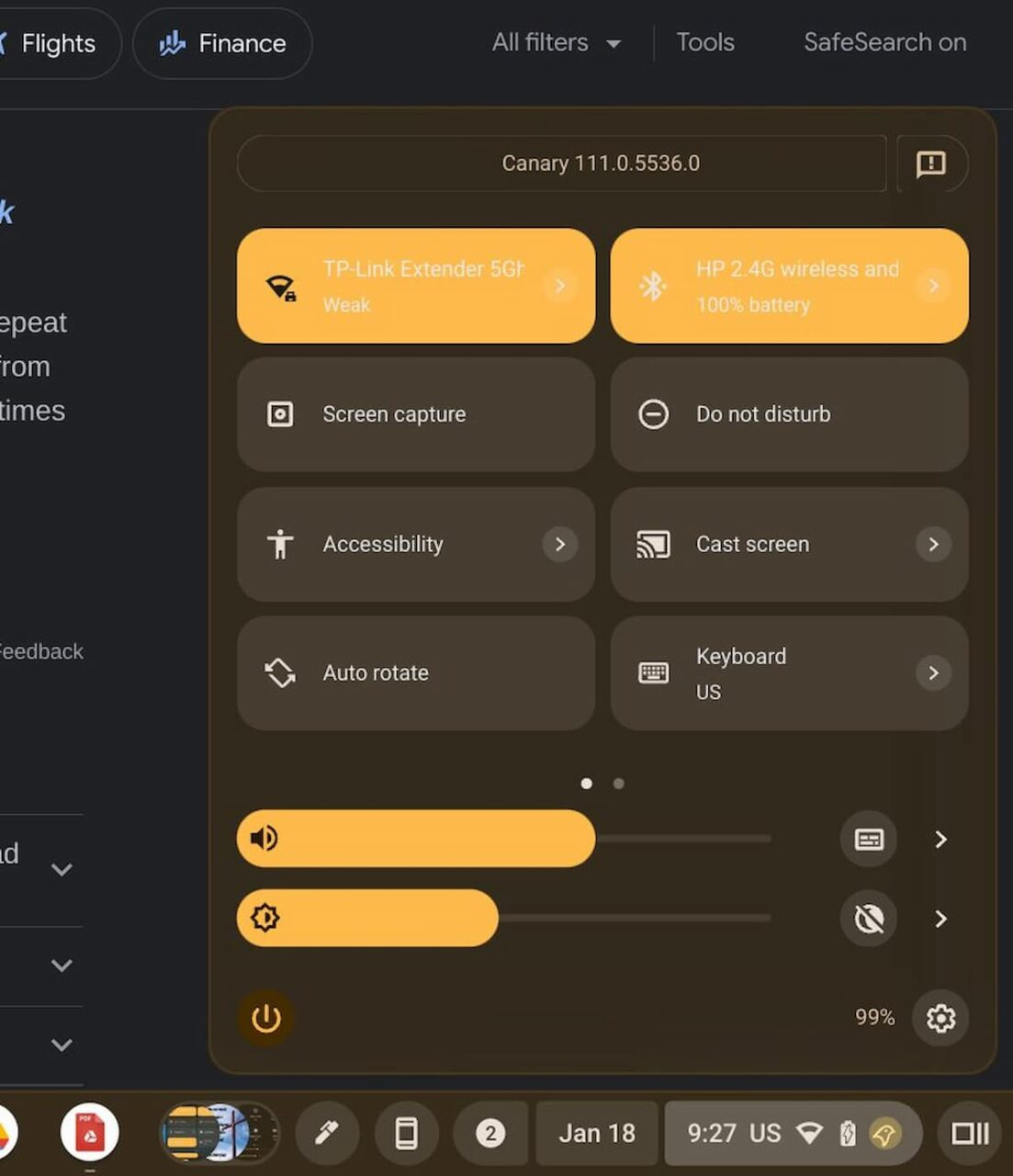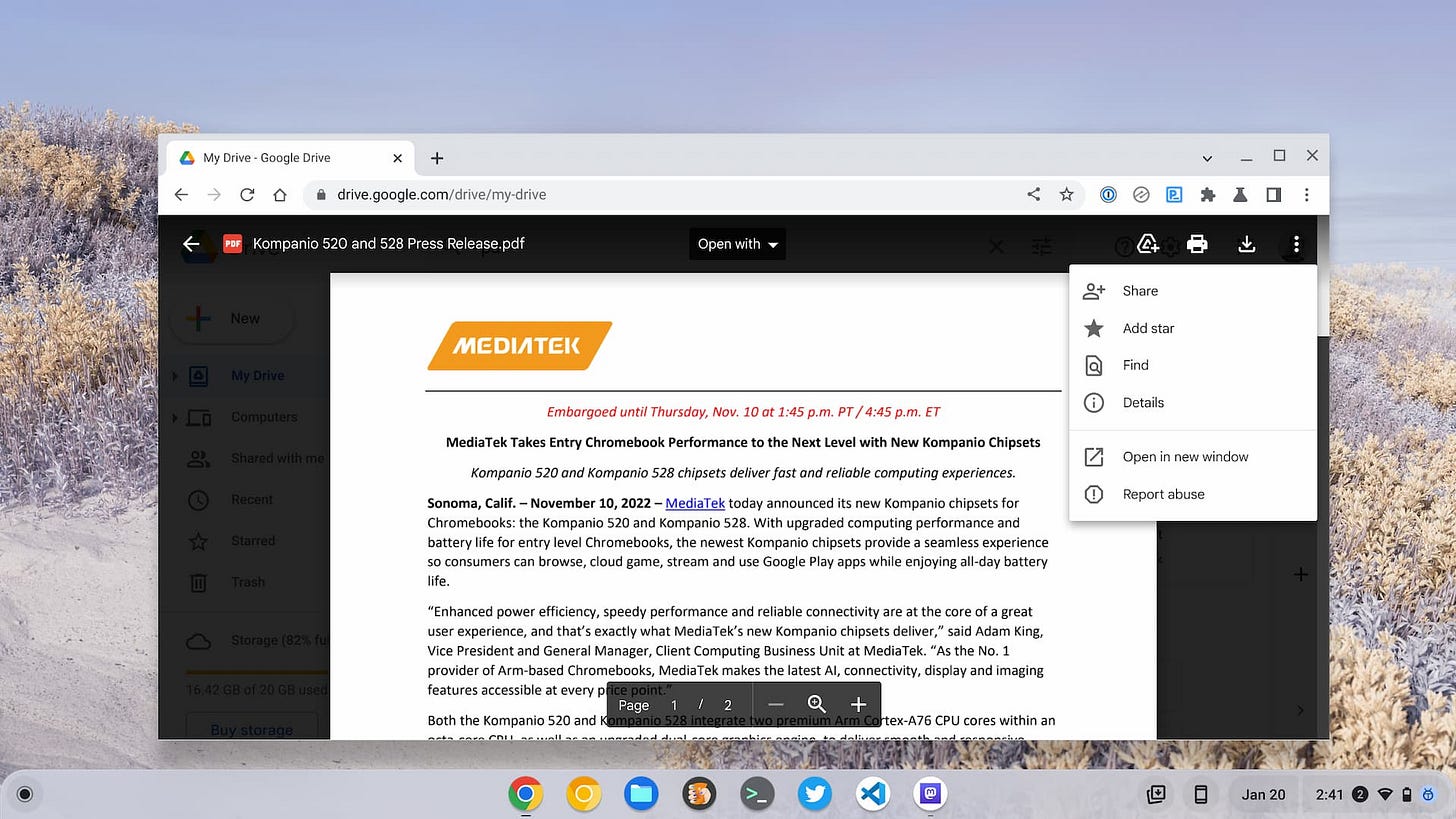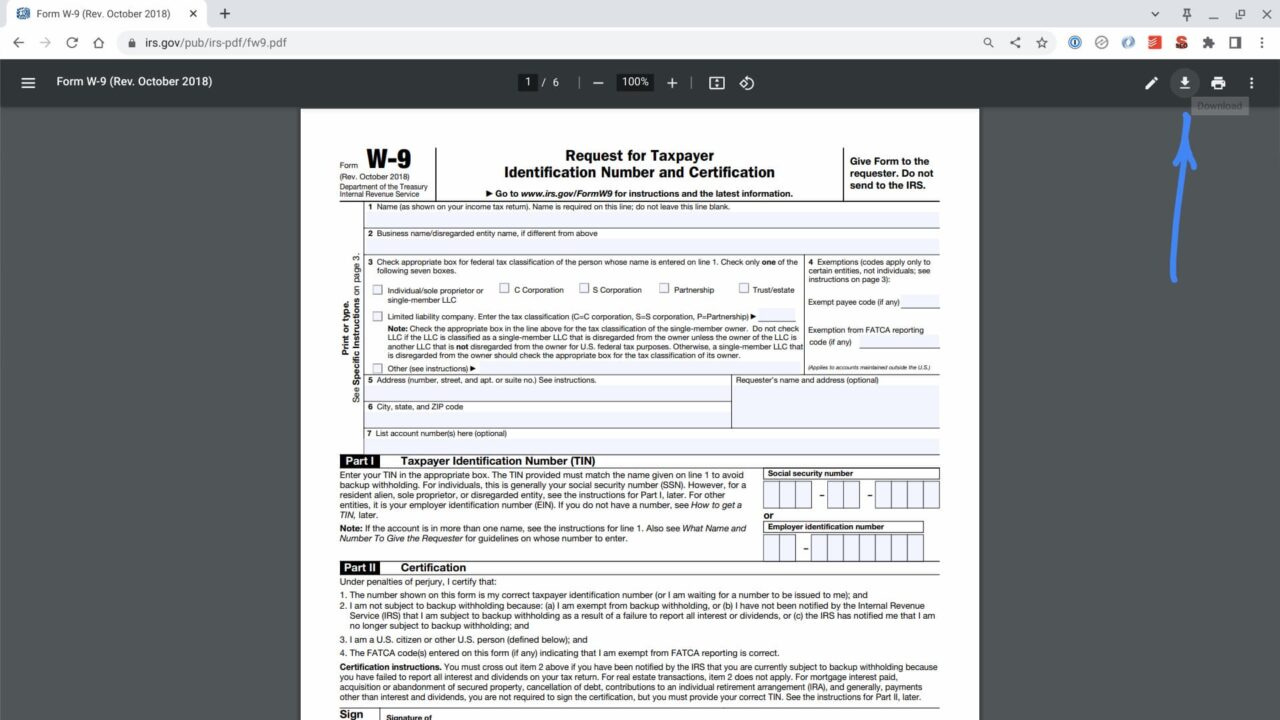This week's news from About Chromebooks, Jan. 22, 2023
Hey Chromies! This is a good week to be a subscriber because the newest ChromeOS software update arrived. ChromeOS 109 should be available or already on your device. I have a rundown of the latest features Google added this time around.
I also have a look at the new ChromeOS interface that uses Google’s Material You look and feel. It’s still in the works but it look nearly complete to me.
Also in the works, at least it appear to be, is an official Minecraft Bedrock app for Chromebooks. I’m not into Minecraft these days, but I don’t judge if others are. ;) Lastly, a built-in tool to capture digital text from a PDF is coming to Chrome and ChromeOS. I have the early details so you know what to expect.
Lastly, my regular, weekly thanks goes out to subscribers that bought me a coffee. If you get value from this newsletter and want to say thanks, click the button below. As always, that’s never required but always appreciated.
Cheers,
kct
This week’s most read post on About Chromebooks
ChromeOS 109 release adds 6 new features to Chromebooks
The ChromeOS 109 release is now available with two security updates and follows just a few days after the Chrome browser was updated to version 109. Chromebooks get six key, new features with the software update. The new version is now rolling out to most of the supported ChromeOS devices. If you haven’t received the ChromeOS 109 release, you can check the status of your device here.
Google only updates the “What’s New” release notes every few versions, so you won’t explicitly be told what’s inside the ChromeOS 109 release. Here’s what I found so far, which is a mix of items I’ve previously covered and some new ones.
Android app launch indicator
On slower Chromebooks you might see a big lag between when you launch an Android app and when it actually appears. That goes away in ChromeOS 109, although the apps won’t launch any quicker.
Instead, you’ll see visual indicators to show that something’s happening. Above is the new Android app launch experience, as noted by 9to5 Google.
Improved audio device detection
Have you ever switched between audio inputs or outputs on a docked Chromebook only to find that ChromeOS doesn’t want to comply? The ChromeOS 109 release brings a solution for that: The system will remember previously used audio inputs from hubs, docks and monitors.
Google says “This should reduce the need to change the audio input or output device when reconnecting a dock, monitor, hub, and so on.” In theory, your audio should just work when making these types of workspace switches.
About this page information in ChromeOS 109
This feature is available for all Chrome browser users but it’s worth highlighting here as well. When using Google search, I’ve noticed an option to show more information about the website results. Now, that information can be found directly in ChromeOS 109.
Look for the new “About this page” option for any open page in Chrome. You’ll find the same results, which include information about the page source.
The Gallery gets color palette with the ChromeOS 109 release
Folks that edit or mark up images using the Gallery app on a Chromebook will appreciate this one. The ChromeOS 109 release removes the limitation of Google’s selected color choices. You can now choose a Custom color through the interface with your trackpad or a specific hex code.
Admins can take out the Trash… can
Remember the new Trash can in the Files app that arrived with the last ChromeOS update? It’s still there, don’t worry. You can still recover any deleted files from the Trash within 30 days. However, not everyone wants to take out the Trash. You can disable the Trash feature.
Well, technically you can’t. This appears to be limited to managed Chromebooks. So you’ll need to ask your ChromeOS admin to set the TrashEnabled policy to ‘false’.
New SFTP options in the ChromeOS 109 release
I surfaced this feature last month although I know most Chromebook users won’t likely use it. This is for the developers and system administrators who need secure access to a remote server. ChromeOS 109 makes this a simpler process right in the Linux Terminal app.
It’s still experimental so you’ll need to enable the flag at chrome://flags#terminal-sftp. I’ve found it quite useful and stable so I’m not hesitating to try it if you need it.
Is Minecraft on a Chromebook in the works at Microsoft?
Given that Microsoft has had an on-again, off-again relationship with Minecraft for Chromebooks, this is interesting news. In the latest Minecraft Bedrock beta code, Beebom reports a Minecraft for Chromebooks trial. This could open put Minecraft on a Chromebook for users who can’t or don’t want to use the limited, Education version.
Here’s the beta code with a clear headline showing this is specifically for a Chromebook trial:
As I don’t have access to this Chromebook Trial, I can’t confirm it actually exists. And there’s been no official mention from Microsoft, either. The company’s support page specifically says Minecraft on a Chromebook is not supported by default.
You can get the Android version (Minecraft Education edition) or install Java and Minecraft in Linux on a Chromebook, but those don’t indicate a new trial to me. So I’m hopeful that this is the real deal.
Assuming it is, there’s no guarantees we’ll officially see support for Minecraft on a Chromebook any time soon. The words “testing” and “trial” suggest that. And because the reported code mentions the “full Minecraft experience”, it likely requires Java and the Linux partition of ChromeOS. Microsoft can work out the install process to make it simpler on its own in that case. Or it could work with Google directly.
At the moment, I see no evidence of that, having looked in the Chromium code commits for mentions of Minecraft. In fact, most of the mentions are either abandoned efforts or related to the existing Minecraft Education edition for Android.
Still, Microsoft doesn’t need Google to offer a simple installer, or at least instructions, to get Minecraft on a Chromebook using Linux.
However, with integrated graphics in Chromebooks these days, I liken the experience to Steam gaming on a Chromebook. For the best experience, you’re going to want a relatively modern (11th gen Intel) Core i5 and at least 8 GB of memory. So that rules out any viable solutions for entry-level devices.
There are tens of millions of those entry-level devices in the classroom. And that audience already has the limited Education Edition of Minecraft. So maybe this a new Microsoft’s effort to expand its Minecraft userbase beyond schools. Stay tuned as I’m sure some news will break or leak in the coming months if Minecraft on a Chromebook is officially in the works.
Material You For Chromebooks Looks Amazing and Nearly Ready
Those who think the ChromeOS user interface is bland on a Chromebook might be interested in Google’s Material You feature. It’s been in the works since at least last year and makes the interface similar to Android 12 and 13. Using some command line flags, C2 Productions tweeted images of the current Material You for Chromebooks state and it looks close to completion in my eyes.
Chrome Unboxed reported on the many images shared via Twitter and I think they look amazing.
I reported back in November that the Material You color palette would automatically be set based on your wallpaper colors. At that time, the in-progress feature was working in an early version of ChromeOS 110. Now it appears more complete, with a theme color picker if you want to go the manual route.
For some surprising reason, I like the interface in a dark mode with green elements, manually chosen with theme colors:
But, I also like the idea of a different color scheme daily.
I set my Chromebook wallpaper to change daily, showing a different landscape or cityscape each day. I’ll have to see how the Material You interface matches those wallpaper colors, the decide to go the manual or automatic route.
Material You for Chromebooks applies to the entire desktop interface, including the Quick Settings tray buttons, by the way. Here’s a shot of those buttons along with slider controls that have been Android-ified.
The above images are from the ChromeOS 111 Canary Channel version, which isn’t due to hit the Stable Channel until the beginning of March. That’s only around six or so weeks away though.
Given how polished Material You for Chromebooks currently looks, I could see Google finish up the coding and push this out the door with that release. Is this a feature you’re looking forward to or will you just ignore it when it arrives?
Incoming tech: OCR text from PDFs on Chrome, Chromebooks
While you can already digitize physical documents with Chrome and ChromeOS, you can’t natively get at the digital text of such scans. A new feature that will work both in Chrome and on Chromebooks will do just that. Google is adding OCR text from PDFs, whether you save them, receive them in an email, or scan them.
I found in-progress code for this feature in the Chromium code logs today. So you can’t yet get use OCR, or optical character regonition, from a PDF scan just yet in the browser or a Chromebook. At least you can’t on the current Stable Channel of ChromeOS, which is at version 109 since last week. I don’t yet see the feature on the Dev Channel either.
The first change I found is for a new menu option when viewing a PDF, whether it’s scanned or saved:
Add a toggle button for PDF OCR to the more action menu on PDF Viewer.
This toggle button is synced with the pref for PDF OCR and sets the
pref whenever it's toggled on or off.
That code led me to another change describing the user interface for PDF OCR feature although the screenshots and design documents are internal.
Google has quickly been beefing up digital documentation on Chromebooks of late and this is simply another step in that march forward. Last month, ChromeOS 108 added a feature that consolidates multiple document pages into a single PDF, for example. And work on the new OCR feature began a few short months ago, back in November.
I also appreciate that OCR text from PDFs is coming not just to Chromebooks but also to any device running the Google Chrome browser.
Initially, I thought this was a ChromeOS-specific feature addition. However, the change log specifically references Linux, Mac and Windows systems as well. Are there good third-party options for scanning digital text from a PDF on those platforms? Sure, there are plenty. Having such a feature baked in is always nice to have, however.
That’s all for this week!
I didn’t make a dent any my review units this past week, unfortunately. I was a little under the weather and took a rare bit of time completely off. I’m feeling 100% now though, so I expect progress to be made.
Keep me honest by checking out the newsletter next week!
Until next time,
Keep on Chromebookin’!



